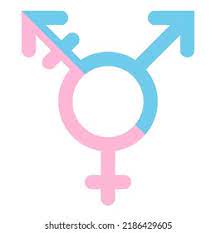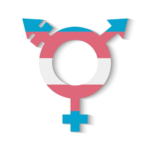In a world that is becoming increasingly aware of the complexities surrounding gender, it’s essential to define and understand different identities, including that of a cisgender woman. While many people may have a grasp of what it means to be cisgender, the nuances of gender identity can sometimes be overlooked. This article will explore the definition of a cisgender woman, the distinctions between various identities, and the societal implications that come with them.
What Does It Mean to Be a Cisgender Woman?
A cisgender woman is someone who identifies as female and whose gender identity aligns with the sex they were assigned at birth. In simpler terms, if a person was assigned female at birth and continues to identify as a woman, she is considered cisgender. This identity is based on a combination of biological and social factors, including personal understanding and acceptance of one’s gender.How Does Tamoxifen Work
Being a cisgender woman isn’t just about biology; it’s also about societal roles and expectations. In many cultures, being a woman comes with certain social norms and behaviors that are often dictated by traditional gender roles. As these roles evolve, so too does the experience of being a cisgender woman, especially as discussions around gender fluidity and non-binary identities gain traction.
The Basics: Understanding Gender Identity and Terms
To get a clearer picture of what it means to be a cisgender woman, it’s crucial to understand some basic terms related to gender identity. Gender identity refers to how one personally identifies, which can include male, female, a blend of both, or neither. This identity may or may not correspond with one’s biological sex. Terms like “cisgender” and “transgender” are used to classify individuals based on the alignment between their assigned sex at birth and their gender identity.
Understanding these terms helps foster a more inclusive environment where everyone’s identity is recognized and respected. While the concept of gender identity has been around for a long time, it is only in recent years that society has begun to engage in more profound conversations about the complexities and variations of gender.
Cisgender vs. Transgender: What’s the Difference?
The primary distinction between cisgender and transgender individuals lies in the alignment between their gender identity and their assigned sex at birth. As previously mentioned, a cisgender woman identifies with the sex she was assigned at birth. In contrast, a transgender woman is someone who was assigned male at birth but who identifies and lives as a woman. This difference underscores the diversity within gender identities and the ongoing discourse surrounding these terms.
It’s important to note that neither identity is superior or inferior to the other; they simply represent different lived experiences. Both cisgender and transgender women can face unique challenges and social pressures based on their gender, and understanding these differences can help to build bridges between communities.
A Brief History of Gender Identity in Society
Historically, gender identity has been a rigid concept in many societies, often limited to binary understandings of male and female. However, various cultures throughout history have recognized more fluid forms of gender. Indigenous communities, for instance, often included third-gender roles, showcasing a broader understanding of gender beyond the binary.
In recent decades, societal perceptions surrounding gender have begun to shift dramatically. Activists and scholars have worked tirelessly to bring attention to gender diversity, advocating for the rights and recognition of both cisgender and transgender individuals. This evolving dialogue has opened the door for greater inclusivity and understanding of gender identities in contemporary society.
Common Misconceptions About Cisgender Women
Cisgender women often encounter various stereotypes and misconceptions that can affect how they are perceived and treated in society. One common misconception is the idea that being cisgender means having an easier life compared to transgender individuals. While it is true that cisgender women may not face the same level of discrimination, they still experience gender-based challenges, including sexism and societal expectations.
Another frequent misconception is that cisgender women do not face any identity struggles. Just like anyone else, cisgender women can grapple with issues related to self-identity, societal pressure, and mental health. It’s crucial to recognize that while their experiences might differ from those of transgender individuals, they are still valid and deserving of consideration.
The Importance of Respecting Gender Identity
Respecting gender identity is fundamental in promoting inclusion and equality within society. For cisgender women, this respect often translates into the acknowledgment of their experiences and the challenges they face, including those related to gender roles, societal expectations, and personal agency. Validating their identity as women helps to create a supportive environment where their voices can be heard and valued.
Moreover, respecting the identities of cisgender women sets a precedent for how society approaches gender in general. By fostering an atmosphere of acceptance, we can encourage open discussions about gender diversity and inclusion, allowing individuals of all identities to flourish without the constraints of societal norms.
How Cisgender Women Navigate the Gender Spectrum
Cisgender women often find themselves navigating a gender spectrum that can feel both liberating and constraining. On one hand, they may enjoy the privileges that come with being recognized as women in society. On the other hand, they can also feel confined by traditional gender roles that dictate how they should look, behave, and interact with others.
Navigating this spectrum requires self-awareness and advocacy, as cisgender women may need to confront and challenge societal norms that restrict their identity. By embracing their individuality, they can contribute to a broader understanding of womanhood that encompasses a range of experiences and expressions.
Celebrating Diversity: The Role of Cisgender Women Today
Today, cisgender women play a vital role in the ongoing fight for gender equality and inclusivity. They often stand in solidarity with transgender individuals and other marginalized groups, advocating for policies and societal changes that promote equal rights and protection. This solidarity is crucial in dismantling patriarchal structures that have long dictated gender norms.
Cisgender women also contribute to the conversation around identity by sharing their own experiences and challenges, thereby enriching the dialogue on gender. Celebrating their diversity means recognizing that all women, regardless of their gender identity, have unique stories and perspectives that deserve to be heard and valued.
Understanding what it means to be a cisgender woman is essential in fostering a culture of respect and inclusivity. As society continues to evolve, recognizing the complexities of gender identity will help pave the way for a more accepting world. Whether cisgender or transgender, all individuals contribute to the rich tapestry of human experience, and it’s our collective responsibility to honor and celebrate that diversity.


